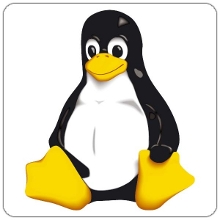The 5 most popular Linux distributions


These conclusions are not from a formal survey. Why?
IDG and Gartner figures only look at pre-installed server operating systems, and Web browser surveys -- such as StatCounter and NetMarketShare -- don't drill down far enough to say which Linux desktop distributions are the most popular.
With that, I have to turn to DistroWatch, the master Linux desktop tracking site for useful desktop Linux use data.
Before launching into this though, I should point out that the most popular end-user Linux of all is probably in your pocket and not on your desktop: Android, of course. With just over half of the U.S. smartphone market, and hundreds of millions of smartphones around the world, Android is the most popular Linux distribution ever; despite 99 percent of its users not realizing that they're Linux users.
DistroWatch comes right out and states:
"The DistroWatch Page Hit Ranking statistics are a light-hearted way of measuring the popularity of Linux distributions and other free operating systems among the visitors of this website. They correlate neither to usage nor to quality and should not be used to measure the market share of distributions. They simply show the number of times a distribution page on DistroWatch.com was accessed each day, nothing more.”
All true, but for better or worse, it's also the best data we have. Other surveys, such as the LinuxQuestions Members Choice Award, are mere popularity contests. Fans vote for their favorites even if they may not use it. As LinuxQuestions founder Jeremy Garcia pointed out in the most recent survey results: "I'm fairly surprised how handily Firefox beat Chrome here. It's significantly more skewed than our actual browser stats are."
Also, for what it's worth, the DistroWatch numbers match up pretty well with the questions and comments I get from my Linux-using readers.
With all that in mind, let's take a brief look at the DistroWatch top five over the last few months.
From the bottom up we find:
4: Debian: I've never been a big Debian fan -- I much prefer Debian-based distributions such as Ubuntu and Mepis -- but lots of other people are. Debian, which just turned 19, remains important not just because it is the foundation for many other Linux distributions, but because year after year it continues to be loved by its users.
4: Fedora:But while Debian isn't one of my favorites, I confess I really haven't cared for Fedora, Red Hat's community Linux distribution, in recent years. Well, it's not so much Fedora, it's the fact that it uses GNOME 3.x -- the desktop interface I love to hate.
Regardless of how I feel about it though, Fedora clearly has its fans. And, if you work on Red Hat Enterprise Linux (RHEL) development, it's a really wise idea to keep a copy of Fedora on hand so you can see RHEL's future.
3: Ubuntu: What's that you say? Ubuntu: the darling of so many Linux fans only in third place? Yep. It's in third. Why? Well even though I like its relatively new Unity interface, a lot of other people really don't. I think that mostly it's because while Unity is great for new users who aren't especially computer savvy, a lot of Linux professionals find it gets in the way -- and, of course, experienced old Linux hands are exactly the kind of people who visit DistroWatch.
That said, Ubuntu founder Mark Shuttleworth thinks the operating system will see 20 million new PCs sold with Ubuntu in 2012, and that's not counting people who install it. Those people will also largely be new computer users. If Ubuntu can get most of the new users coming to Linux, I think they'll be happy even if they're no longer as popular with old-guard Linux desktop users.
2: Mageia:And, number two is, "who?" I can hear some of you asking. Mageia is a September 2010 fork of Mandriva Linux, a commercial Linux distribution, which was once quite popular in its own right. In 2006, Mandriva suffered management and financial problems. Since then, while the firm has continued to have problems, Mageia -- freed of Mandrivia's business woes -- has continued on to become a wildly popular Linux distribution.
And why is Mageia so popular? I think it's because it's a straightforward easy-to-use Linux distribution. Unlike Ubuntu's Unity user interface, Mageia uses the Linux pro friendly KDE 4.8 desktop. In short, it's just a darn good KDE distribution -- which, by the way -- according to LinuxQuestions' last survey, is now the single most popular desktop interface of all.
1: Mint Linux:This should come as no surprise. Mint is an excellent distribution and my own personal favorite. Users have enjoyed and loved using it ever since Ubuntu started down the Unity path.
What Mint has going for it is an outstanding desktop interface of its own, Cinnamon, which is very remindful of the classic GNOME 2.x interface. Add to that outstanding software and hardware support, there's little question as to why Mint still appears to be the most desktop popular Linux of all.
Related: